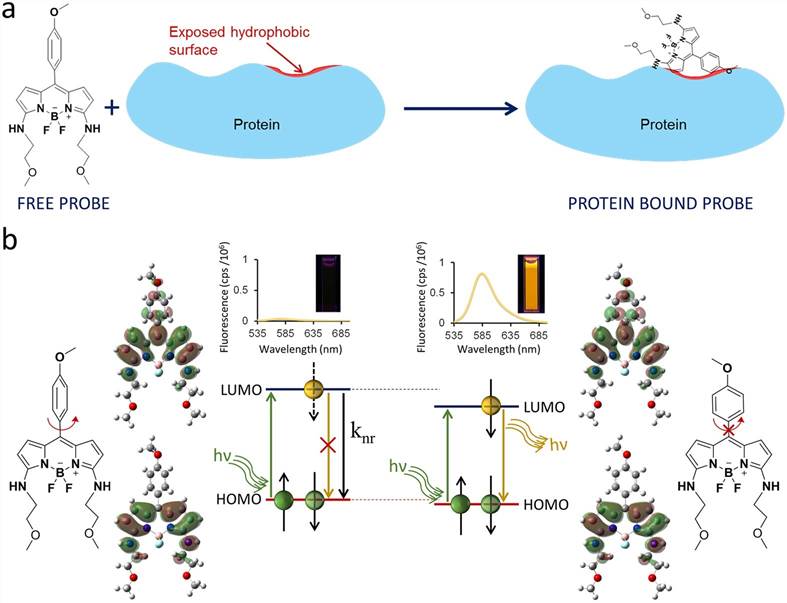Protein Hydrophobicity Test
Surface hydrophobicity is one of the important properties of proteins, indicating the physical property of mutual repulsion between protein molecules and water, and plays an important role in maintaining the stability of proteins and determining their conformation and functional activity. Protein drugs are an important class of biotechnology products, ranging from recombinant proteins and vaccines to monoclonal antibodies, making them the most promising products in the biomedical field. As changes in the conformation or clustering of molecules in drugs such as recombinant proteins and antibodies can affect their biological activity and even become immunogenic to humans, it is essential that Creative Biostructure helps you to analyze the hydrophobicity of protein surfaces to determine if the conformation is normal, and hydrophobicity is thought to be closely related to resolving the functional properties of proteins.
 Figure 1. Plausible model for increase in fluorescence of HPsensors. (Dorh, N., et al., 2015)
Figure 1. Plausible model for increase in fluorescence of HPsensors. (Dorh, N., et al., 2015)
Fluorescent Probe Method
This is the most widely used method, which is simple and rapid to perform, assesses the function of the protein, and analyses pure proteins in small quantities. It can be used to determine the surface hydrophobicity of proteins that can bind to the probe. We offer anionic probes, cationic probes, and neutral probes to meet your in-depth research needs.
Hydrocarbon Binding Method
We can use non-polar hydrocarbons to bind to different proteins and obtain information on hydrophobic sites by probing the binding sites.
SDS Binding Method
SDS can bind to protein molecules through hydrophobic interactions, forming protein-SDS complexes. After dialysis, SDS is extracted with chloroform, and methylene blue is added to bind the two. The amount of SDS bound to the protein is determined by measuring the magnitude of the SDS-methylene blue absorbance, thus reflecting the difference in hydrophobicity of the protein surface. The advantage of the SDS binding method is that the hydrophobicity of insoluble proteins can be determined.
Reversed-phase High-performance Liquid Chromatography (RP-HPLC)
RP-HPLC determines the hydrophobicity of proteins based on the difference in retention time caused by the different partition coefficients of the proteins to be measured between the immiscible mobile and stationary phases so that the hydrophobicity of proteins can be determined based on the order of peak emergence times. RP-HPLC can only be used for the analysis of non-polar and weakly polar substances and is not suitable for the analysis of strongly polar proteins, nor the determination of poorly soluble proteins.
Applications
- To understand the interactions between protein macromolecules and between proteins and other molecules.
- To study the changes in the properties of proteins in different solution environments and the partitioning behavior on chromatographic separation media, etc.
- Understand the physiological activity of proteins and optimize separation and purification methods.
- Prepare high-purity pharmaceutical proteins.
Proteins are the main components of living organisms and play a very important role in all stages of life's growth and development. Creative Biostructure helps you to perform efficient and sensitive protein separation and hydrophobic analysis studies to keep you at the forefront of modern drug analysis, analytical chemistry, and life science research. Please feel free to contact us to submit your requirements and for more information.
Ordering Process
Reference
- Dorh N., et al. BODIPY-based fluorescent probes for sensing protein surface-hydrophobicity. Scientific Reports. 2015, 5(1): 18337.
